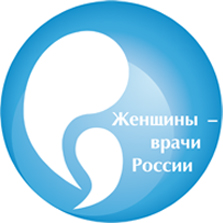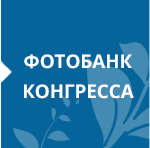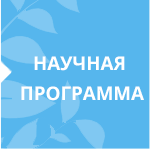INTERNATIONAL MODEL FOR THE EXCHANGE OF THE BEST PRACTICES IN THE FIELD OF DESEASE PREVENTION AND REHABILITATION OF THE POPULATION.
Electronic monograph
The international model is being created under the coordinating role of the Representative Office in Moscow of the Taipei-Moscow Coordination Commission for Economic and Cultural Cooperation to help organizers of health care in different countries, practitioners, scientists to implement the best healthcare practices.
Currently, the basis of an electronic model has been created, in which the participating countries are represented with a brief description of the health systems and topical issues of each country:
From the block of each participating country with a photo of the author, it is possible to browse a brief text about the country and it's healthcare;
The attachments to the block of each country are represented by:
- articles by authors from the current country on the topic of prevention / rehabilitation, as well as of the experience of COVID-19 prevention and control (Taiwan);
- PowerPoint presentations authored by the participants of the project
A model framework has now been created, in which the participating countries are represented with a brief description of each country.
This is a renewable and expanding on-line model, in which it is planned to attach audio and video files with recordings of the best messages about achievements in countries, video presentations of scientists, health organizers about new implemented state programs to text files.
Scientists from different countries have the opportunity to exchange contacts, invitations to international webinars and conferences with each other.
The presentation of the created model is planned at THE WORLD HEALTH ORGANIZATION AND THE UNITED NATIONS (with the coordinating role of the Representative Office in Moscow of the Taipei-Moscow Coordination Commission for Economic and Cultural Cooperation.)
Project coordinator:
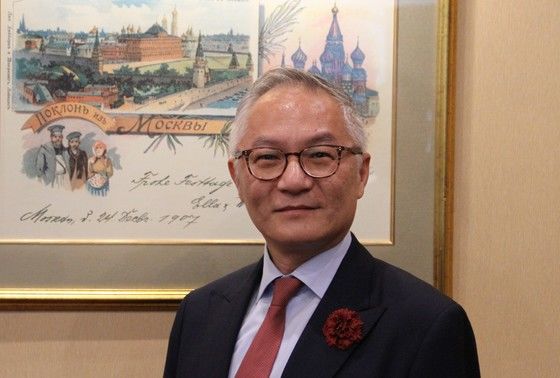
PARTICIPATING COUNTRIES:
Taiwan
Tai-Yin Wu MD, Ken N Kuo MD, FACSNational Health Research Institutes, Taiwan
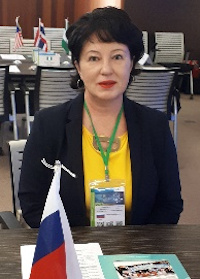
Russia
Olga Goncharova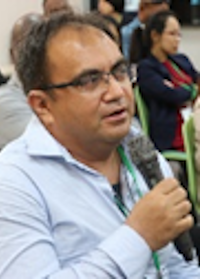
Fiji
Eric Rafai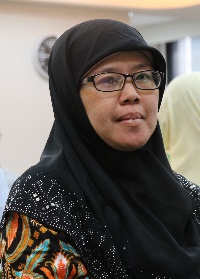
Indonesia
Nurlina Kanin Ucu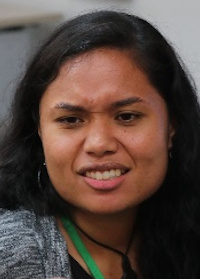
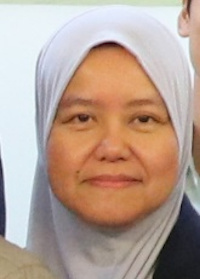
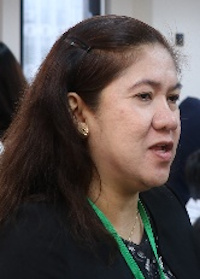
Malaysia
Chai Yi Wong,Musalnizan Binti Mustalkah,
Syrrunnaja Bin Adnan
Palau
Cherie Lynn Telbong Rengiil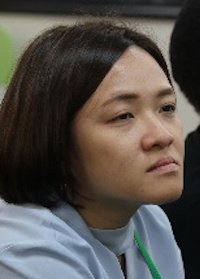
Philippines
Analiza Villapaña BaldonadoSolomon Islands
Adrian Leamana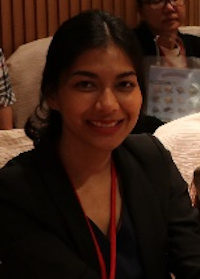
Thailand
Anchulee Onsri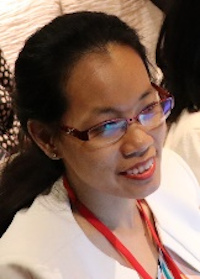


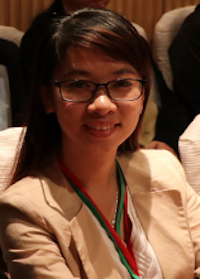

Vietnam
Tu ThanhVu, Du Mieu Huynh, Le Minh Lan Phuong, Nhu Thao Phan Nguyen, Phong Thanh Vo & Saigon Tu Thanh, Vu Du Mieu, Huynh Le Minh Lan, Phuong Nhu Thao Phan, Nguyen Phong Thanh Vo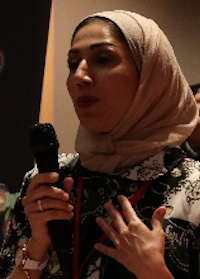
Bahrain
Maysoon E. Althawadi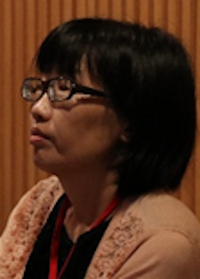
Mongolia
Gerelmaa Erdenetsogt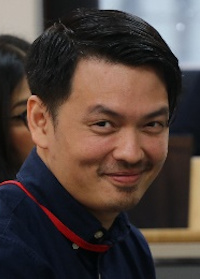
Oman
Fannah Al Fannah
Kiribati
Tarau Bauia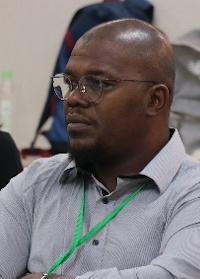

Nigeria
Usman Adamu Gwaram,Esteller Ogugua Mbadiwe
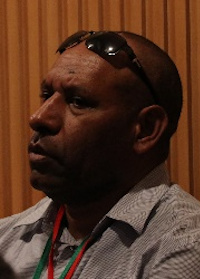
Papua New Guinea
Robert Pugu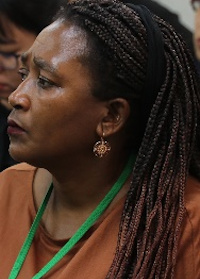
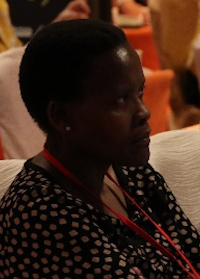
Kingdom of Eswatini
Mavis Ntombifuthi Ginindza Mdluli,Voyivoyi Nonhlanhla Lukhele
- Moscow
(under the editorial supervision of Doctor of Medical Sciences, Professor, Head of the Department of Sports Medicine and Medical Rehabilitation of the Federal State Autonomous Educational Institution of Higher Education " I.M. Sechenov First Moscow State Medical University" of the Russian Ministry of Public Health, E.E. Achkasov)


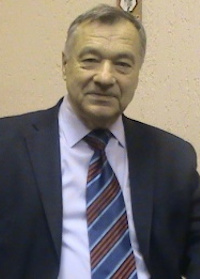
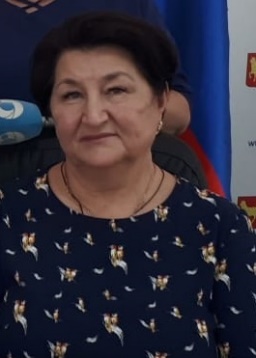
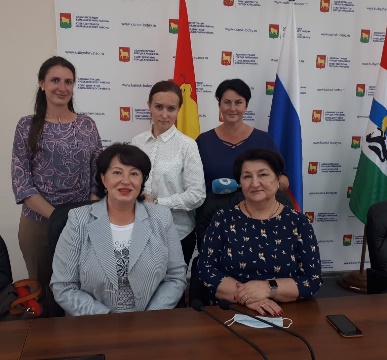
This is a model that Taiwan plans to share with other countries, having huge experience in organizing preventive measures in the fight with different infectious diseases and in a distant work with other countries.
The electronic model book is written in Russian and translated into English. Students of the countries of Asia and Africa, residents, post-graduate students studying at I.M. Sechenov First Moscow State Medical University ” of the Ministry of Health of Russia, take part in the project as Project assistants.
- Moscow,
- Moscow region (city settlement Stupino),
- Far East,
- Novosibirsk region (Kuibyshev city).
*electronic model of cooperation is developed as a text option in accordance with short videos, photo reports, presentations.
this international cooperation model is translated into English - this is a brief text with photo reports.
each participating country submits materials on an example plan:
- brief characteristic of the country;
- service for prevention and rehabilitation in the country;
- description of the best actual implemented state programs in the country;
- description OF 1-3 new prevention and rehabilitation technologies
(example - how the Russian Federation presents its materials):
- history of Russian-Taiwan cooperation in the field of healthcare;
- service of prevention and rehabilitation in the Russian Federation;
- the best public programs implemented in separate subjects of Russia;
- description of 1-3 new technologies of disease prevention and public rehabilitation.
SO, INTRODUCING THE FIRST COUNTRY - TAIWAN
COUNTRY: TAIWAN.


In 2016, Tsai Ing-Wen, a candidate from the Democratic Progressive Party, became a first female President of the Taiwan. She won the reelections again in 2020.
* In 2022, the Congress of the «World Medical Women' Association» will be held in Taiwan and this electronic project will be presented as a project carried out under the leadership of Taiwan with the aim of sharing experience in organizing preventive and rehabilitation services in Asia, Africa, and Russia.
The Minister of Health and Welfare of the Republic of China (Taiwan), Chen Shih-Chung, has repeatedly stated that Taiwan's experience in controlling infectious diseases and establishing a universal health insurance system can help strengthen health on a global scale, and Taiwan is ready to share its experience with other countries through participation in the assembly - the governing body of the World Health Organization (WHO).
The minister noted: “Once receiving aid from abroad itself, Taiwan is now repaying its 'debt' to the world by helping those who need it most. By helping others, our country is making an irreplaceable contribution to strengthening the global health network. ”
Such an example is the activities of the Taiwan International Medical Training Center, established in 2002 by the Executive Yuan Health Board, the predecessor of the Ministry of Health and Human Services (MOHS). The Center provides advanced training for foreign specialists in the field of clinical medicine and healthcare management. Between 2002 and 2019, about 1,500 professionals from 65 countries and territories attended these courses.
Taiwan has a Global Medical Device Support Program, implemented by the MoHSO since 2005, under which medical equipment from medical institutions in Taiwan is partially transferred to developing countries: to date, 33 countries have received more than 5,400 medical equipment.
According to the Minister of the Ministry of Health of Taiwan, Taiwan's participation in the work of WHO will enable it to contribute, primarily in the form of its valuable experience, to the creation of effective health systems in other countries and to the implementation of international health care programs.
In 2016, the National Center for the Control and Research of Mosquito-borne Diseases was established in northern Taiwan, and in 2017 a regional office was opened in Tainan Municipality, in southern Taiwan. The center, with state-of-the-art laboratories and under the direction of the National Institutes of Health, is working to improve methods for identifying mosquito breeding sites and neutralizing dengue and Zika virus vectors.
* Dengue fever is one of the main threats to human health in many countries in Southeast Asia.
Taiwan also has a unique experience in the early detection and treatment of tuberculosis: the incidence of tuberculosis in Taiwan between 2005 and 2018 fell by half to 37 cases per 100,000 population, a significant achievement given the current movement of people between Taiwan and neighboring countries with high rates of tuberculosis infection.
Taiwan can share with the world its experience in the development and implementation of the universal health insurance system - access to medical services and their relatively low cost. Members of the insurance program have access to a wide range of services, including Western medicine, dentistry and traditional Chinese medicine. Life expectancy in Taiwan has increased from 74.5 years in 1995, when the system was introduced, to 80.4 years in 2017.
In order to ensure fairness, the amount of monthly insurance payments is calculated in proportion to the income of each individual. The size of these payments for employees is currently 4.69%, while the workers themselves pay 30% of the corresponding amount, their employers - 60%, and the remaining 10% - the government. In addition, there is a “levy” of 1.91% on additional income in the form of premiums and dividends from shares.
The list of treatments and drugs covered by the General Health Insurance program in Taiwan has been increasing over the years. The list also recently included an antiviral drug to treat hepatitis C, which affects about 400,000 people in Taiwan, one of the leading causes of liver cancer. For the provision of patients with this drug, the Government has allocated 6.54 billion NTD. (US $ 211.4 million) with the goal of eradicating the disease by 2025 - five years ahead of WHO's target for eradicating viral hepatitis worldwide.
The General Health Insurance program in Taiwan covers over 99% of the country's population, including those in prisons; foreigners studying, working and living in Taiwan; infants born in Taiwan whose parents are non-citizens of the Republic of China (Taiwan).
Ministry of Healthcare Minister Chen Shih-Сhung stated that "our Ministry does not leave anyone outside the General Health Insurance system and this contributes to the prevention and control of infectious diseases, since treatment is provided to all who need it."
According to the results of a survey conducted by the Ministry of Health and Social Security in 2019, 86.5% of respondents expressed satisfaction with the way the General Health Insurance system operates.
The Minister of Health of Taiwan notes: “Our system can serve as a model for other countries seeking to create world-class universal health coverage systems. Taiwan has long since achieved WHO's goal of providing high-quality health services to everyone.”
And now Taiwan is committed to professional, constructive participation in the World Health Assembly, in technical meetings and other WHO events, which will give it the opportunity to share its lessons learned with other countries.
Obviously, with Taiwan's participation, the international community will be much better prepared to meet the global health challenges.
SYSTEM FOR PREVENTION AND CONTROL OF INFECTIOUS DISEASES IN TAIWAN
Taiwan has several infectious disease control systems to prevent infectious diseases early and to make smarter decisions when those are detected.
Taiwan has an extensive laboratory network accessible to everyone nationwide. Since 2014, Taiwan's hospitals and clinical laboratories have switched to automatic reporting, improving the speed of reporting of infectious diseases and laboratory tests.
Talking about Taiwan's surveillance system, we can consider its effectiveness in monitoring the incidence of influenza and Zika virus. For example, comprehensive information on the incidence of influenza was received in a timely manner, reflecting a higher level of influenza virus activity and an expansion of its spectrum in the period 2015-16, which ensured prompt dissemination of information and coordination of response operations. Taiwan also has well-developed disease detection systems and was the first country to report cases of Zika virus importation from Miami Beach and Singapore, demonstrating the high level of awareness and reliability of Taiwan's surveillance system.
These two examples demonstrate sufficient flexibility of monitoring systems in Taiwan, the possibility of their adaptation to the prevention of infectious diseases.
Taiwan, a Pacific business and tourism hub with a risk of imported cases of infectious diseases such as avian influenza and Zika virus, is actively involved in this partnership by pursuing and exploring the opportunities associated with the Global Health Security Agenda (GHSA)) using the Joint External Evaluation (JEE) tool. One of the key capabilities is real-time surveillance. Epidemic control, a priority area for Taiwan, has been assessed as having a credible and sustainable capacity to comply with The International Health Regulations (IHR) 2005.
Surveillance for Notifiable Diseases
The Taiwan CDC's National Notifiable Disease Surveillance System (NNDSS) has been the foundation of Taiwan's web-based infectious disease surveillance since 2001. NNDSS is a centralized passive surveillance system that integrates medical report data and laboratory diagnostic data. Healthcare professionals can access the NNDSS through their healthcare staff ID card, which is an official IC smart card for electronic signature issued by the Department of Health and Human Services (MOHW) to report suspected or confirmed cases and submit samples of biomaterials, if necessary. In 2014, the ministry implemented the Taiwan Health Cloud program. This Infectious Disease Cloud program automatically reports using hospital electronic health records (EMR); it has improved the timeliness of the submission of NNDSS data. From 2014 to 2016, a total of 47 health centers and metropolitan hospitals created an automatic reporting mechanism, representing half of the records reported by the NNDSS. In addition, this system allows healthcare providers to automatically retrieve patient test results and reduces the need of re-entering data. For example, after using EMR in a hospital, the average time required for a healthcare worker to complete the report process to the Taiwan CDC has been reduced from 9.2 minutes to 6.3 minutes.
Emergency room surveillance
The need to quickly identify possible outbreaks of infectious diseases in a population, track trends and predict their prevalence is one of the lessons learned during the 2003 SARS outbreak. In 2004, an inpatient real-time outbreak surveillance system was created, the main task of which is to register individual disease codes (ICD-9-CM and ICD-10) after patients visits at designated emergency response hospitals.
The real-time outbreak and disease surveillance system provides comprehensive coverage, with 90% of patient records being uploaded to Taiwan's CDC server within 1 hour and the remaining 10% within 1 day. It also covered over 96% of all emergency room visits recorded in Taiwan's National Health Insurance Program between 2012 and 2015. In addition, since 2008, Taiwan's CDC has been receiving aggregated numbers outpatient, inpatient and emergency / urgent care centers using data from the National Health Insurance Program (NHI) (coverage> 99% of the population) through machine-to-machine interactions. The time interval between data entry in hospitals and clinics before data is received by Taiwan CDC is 2 days.
Death certificates surveillance
Since 2009, information from the National Death Certificate Database has been automatically submitted to the data warehouse of the Taiwan CDC on a daily basis and used to calculate mortality from infectious diseases. Medical institutions report this information to the system within 7 days from the date of issue of the death certificate. In 2014, 87.2% of all deaths published by the Statistics Estonia were registered in this system.
Laboratory control
The national laboratory surveillance network monitors viral activity in the population and is the basis for epidemic surveillance of influenza and enteroviruses. A Laboratory Automated Reporting System (LARS) has now been developed to monitor 20 types of microorganisms known to public health. The reporting system uses a database and a single standard for identifying medical laboratory observations - (LOINC-Logical Observation Identifiers Names and Codes), for automatic daily updates of positive results from the Laboratory Information Management System (LIMS) used in clinical laboratories. By adopting data standards and formats for automated laboratory reporting, 51 medical centers and metropolitan hospitals are able to provide laboratory information to automated laboratory reporting. Information from hospitals, obtained through the cloud-based data exchange platform, is transferred to the data warehouse of the Taiwan Center for Disease Control (CDC) and converted into open data format for dissemination through the national open data platform.
Case-based surveillance
Rapid detection, reporting, confirmation of diseases that are a potential threat to public health is common practice for the Taiwan CDC. Sources of information include: newspapers, web browser requests, social media, television channels, electronic newspapers, official and unofficial health authorities' websites, diplomatic telegrams, faxes, and an advisory hotline. To ensure verification of information, WHO information services and international health authorities are provided. The Rapid Response Capability is used to immediately inform the public of rumors and confirmed cases on the Taiwan CDC official website. In addition, outbreak threat intelligence is disseminated daily for internal use. This monitoring system allows detecting approximately 3 to 10 cases of public health threats every day.
information Availability to the Public
Taiwan's CDC open data portal provides over 200 datasets, including all reported cases and emergency room visits, quarantine practices, vaccines, nosocomial infections, and more. Much of the information — for example, datasets related to case counts of all reported diseases and emergency department visits — are updated automatically and daily. New datasets are published after discussion and follow the principles of open data. The open data portal is available to the public and the datasets have been downloaded over 220,000 times.
Taiwan's National Infectious Disease Statistics System is a public website that provides nationwide data on confirmed cases and syndromic data by disease category, jurisdiction, time period and case origin, and automatically generates charts after request. Statistics are updated automatically on a daily basis and the raw data can be downloaded to CSV or Excel files for future reference.
Example 1: Surveillance for Influenza
Influenza surveillance in Taiwan is carried out through the coordinated work of a number of organizations: the statistics department of the Ministry of Health, the National Health Insurance Administration, local health departments, the National Influenza Center, regional laboratories specializing in the study of the influenza virus and medical institutions. Influenza virus activity information is generated based on the percentage of positive influenza tests; type of virus and antigenicity, antiviral resistance; outpatient, inpatient examinations for the control of influenza-like illnesses (ILI); identified severe complicated cases of influenza; the number of pneumonias and deaths from influenza. This information is essential to assess the risk, morbidity, mortality, and potential impact of influenza in the population and on health services. The Taiwan CDC assesses the activity of influenza and other respiratory diseases year-round and releases the weekly online Taiwan Influenza Express flu surveillance report during influenza season
Influenza laboratory surveillance
The laboratory control network includes 8 regional laboratories. Samples are cultured to identify the subtype and antigenicity of the influenza virus, with a period of data submission to the Taiwan CDC of up to 2 weeks from the date of receipt of the biological material. In 2014, the development of the "Cloud for the fight against infectious diseases" made it possible to establish an automated laboratory reporting system, in which 51 clinical laboratories automatically provide data on positive results detected through rapid diagnostic tests for influenza, polymerase chain reactions (PCR) and and enzyme immunoassay (EIA)- studies aimed at detecting viral antigens in samples.
Laboratory Automated Reporting helps provide real-time reporting to enable rapid response to influenza outbreaks, while regional laboratories provide information on influenza subtype and antigenic characteristics. The integration of these 2 surveillance systems provides a complete picture of the characteristics of the influenza virus.
Epidemic control of influenza-like diseases
The number of patients with influenza-like illnesses who seek help is recorded through a series of codes (ICD-9-CM / ICD-10) that identify respiratory syndromes. Identification codes are recorded in real-time observations, as well as in the epidemic surveillance system. The National Health Insurance Program Administration collects diagnostic codes ICD-9-CM (Code: 480-487) and ICD-10 (Code: J12-J17, B25, A37, A22, B44) from outpatient records of patients with influenza-like infections.
Adjusted for influenza-like illnesses, the percentage of ER visits and outpatient appointments tended to increase annually at about 48-51 weeks and decrease at 9-10 weeks of the subsequent year during the 2013-2016 flu seasons.
Deaths from pneumonia and influenza
Pneumonia and influenza mortality trends are determined by searching the National Death Certificate System for the keywords pneumonia, cold, or flu. To ensure data stability, 4-week moving averages are used as the standard for calculating weekly results. During the non-epidemic period, between 300 and 400 deaths from pneumonia and influenza were reported per week, with deaths from pneumonia and influenza increasing significantly during the epidemic season. Submission of these data is delayed by no more than 1 week from the date of issue of the death certificate, while coverage of all registered deaths is more than 85%. As a result, this system is able to help track epidemics and determine the severity of the influenza season, which helps to build strategies to combat it and communicate with the public.
Example 2: Surveillance for Zika Virus
Taiwan has introduced border health care practices since 2003. These practices include screening for arrivals for fever, travelers' self-reports of symptoms, and personalized health education newsletters. Passengers with a fever arriving from regions endemic for dengue (or from regions with an unfavorable epidemic situation for this disease) are tested for Dengue virus or Flava virus.
On January 10, 2016, the first imported case of Zika virus was recorded thanks to a screening for fever at Taiwan International Airport. This case, and the subsequent declaration of Zika as a public health threat of international concern, prompted improvements in Zika detection measures:
1. Zika virus infection has been designated as a Notifiable Disease as Category 5 under the Infectious Disease Control Act.
As a result, doctors are required to notify any people suspected of having a Zika virus infection within 24 hours and complete further review of the clinical case within the next 24 hours.
2. The Central Epidemic Command Center has been activated at Level 3, indicating that Zika virus infection is an extreme public health threat. The CEO of CDC Taiwan, during Level 3 activation, takes over the responsibilities of the executive and coordinates the activities of the relevant government agencies: The Environmental Protection Agency and the Ministry of Education.
3. A network of laboratory diagnostic centers has been established to detect Zika virus infection, including 9 clinical laboratories and a national laboratory at the Taiwan CDC.
Responsible clinical laboratories performed real-time PCR diagnostics to detect viremia using blood and urine samples as biomaterials. As of November 5, the average time interval from the date of notification to the date of laboratory diagnosis is 2 to 3 days, which allows for effective measures to prevent the spread of infection.
4. For pregnant women suspected of being infected with the virus, free testing is available, regardless of whether they have symptoms. Test requests can be made through the Taiwan CDC's toll-free hotline or attending physician.
COUNTRY: RUSSIAN FEDERATION.
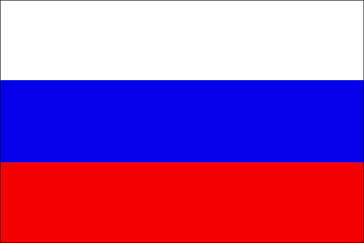
1.THE HISTORY OF RUSSIAN-TAIWAN COOPERATION IN THE FIELD OF HEALTHCARE
ИThe history of cooperation between Taiwan and the Russian Federation within the framework of public-state interaction represented by the All-Russian public organization "Russian Medical Women' Association" (admitted in 2013 to the World Medical Women' Association) began in 2011-2013 at events dedicated to the celebration of the main National Day - "holiday of two dozen" (it falls on the tenth of the tenth month – October).
* Events are organized / coordinated by the Representative Office in Moscow of the Taipei-Moscow Coordination Commission for Economic and Cultural Cooperation, which includes economic, cultural, information departments, a science and technology department (including healthcare) and a department for processing tourist documents


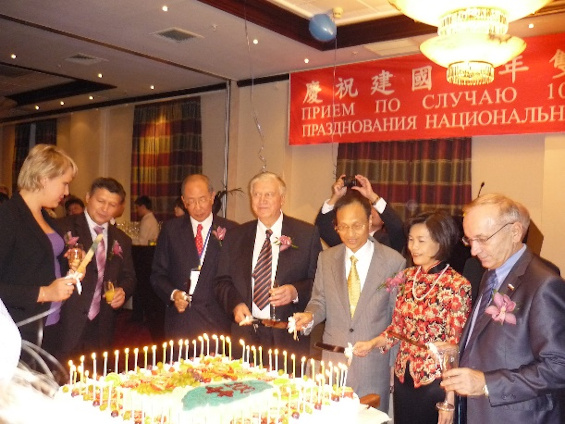
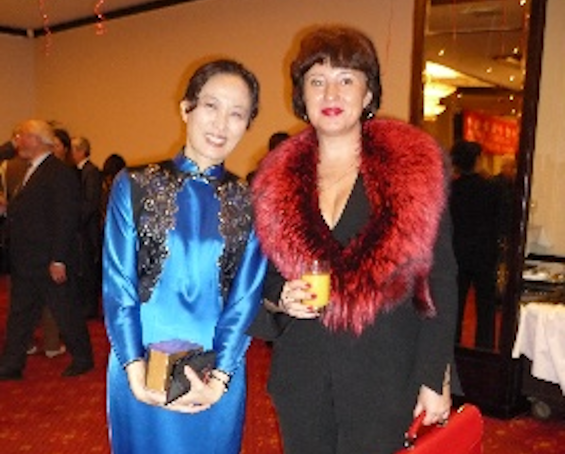
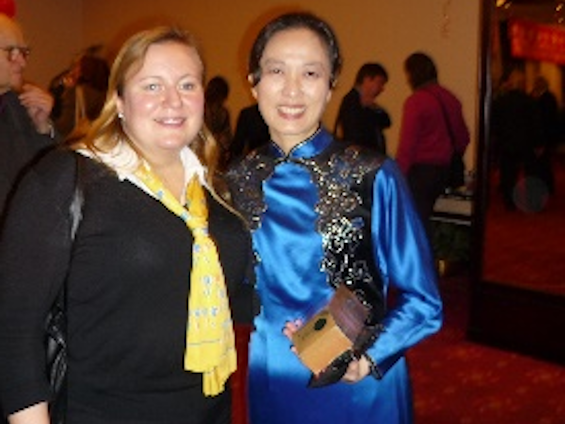
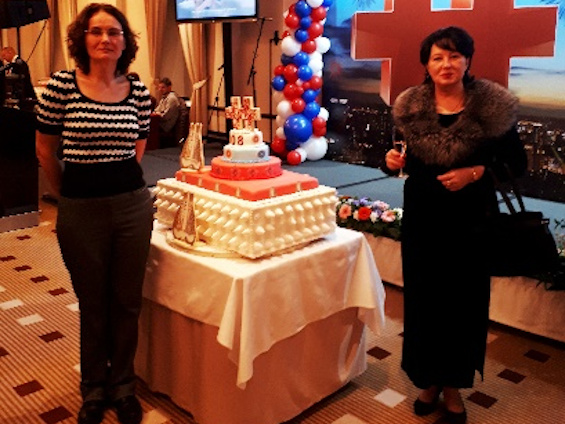

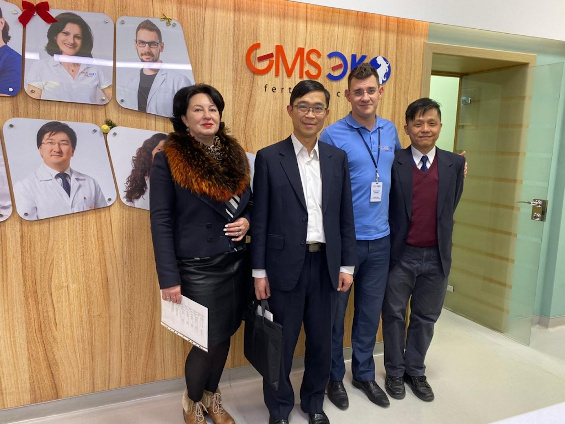

The first step of the "Russian Medical Women' Association" and consultant of the "Russian Medical Women' Association" Denis Kochkarev to participate in events and familiarize themselves with the Taiwanese healthcare system was to write an article on healthcare in Taiwan (article in PDF).
The Russian Medical Women' Association, having established regional branches in 49 constituent entities of Russia, continued to participate in the activities of the Representative Office of the Taipei-Moscow Coordination Commission for Economic and Cultural Cooperation, distinguished by the highest level of organization, and to acquaint the constituent entities of Russia with the healthcare system of Taiwan.
As part of the development of Taiwan-Far Eastern relations, a meeting was organized between the Representative Office of Taiwan and the Agency for the Development of the Far East.
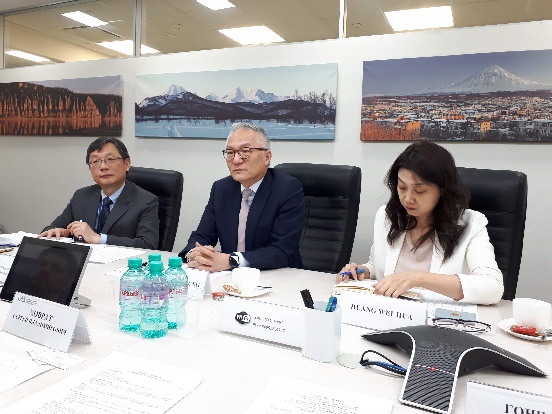
 Currently, cooperation with the Science and Technology Department of the Representative Office of the Taipei-Moscow Coordination Commission, represented by Director Professor Isaac Song Ren Huang, is actively developing, meetings are being organized with Taiwan scientists to exchange new technologies in the field of healthcare.
Currently, cooperation with the Science and Technology Department of the Representative Office of the Taipei-Moscow Coordination Commission, represented by Director Professor Isaac Song Ren Huang, is actively developing, meetings are being organized with Taiwan scientists to exchange new technologies in the field of healthcare.
One of the most important areas of cooperation between the Russian Medical Women' Association and Taiwan was the creation of electronic Registers: for the period from 2013 to 2020, the Russian Medical Women' Association created: the International Register of Clinics, the First National Register of Companies and Their Technologies, - social programs of the Far East, opening from the site of the Russian Medical Women' Association rmwa.ru.
In 2019, the creation of the International School for Parents was completed http://baby-inform.ru/ . There is already a domain name of the portal on "com" and the translation of the School into English has begun (the projects received an international patent, all of them are protected by copyright). Within the framework of the project, it is planned to conduct a joint study to assess the development of children in Russia (Moscow, Moscow region, Novosibirsk region, Far East) and Taiwan.
In the Register of Clinics, information about Russian and Taiwanese clinics has been placed (link to a Taiwan clinic).
Remote work with clinics and resorts in Taiwan is carried out by assistants of the President of the Russian Medical Women' Association, Anastasia Bondarenko – the Head of the Electronic Registries of the RMWA, and Ivan Selin, the Head of the Registry of Clinics, Taiwan. Doctors and the population of Russia and Taiwan can receive information about clinics and resorts in Taiwan approved by the Russian Medical Women' Association.
Brief information about the Taiwan University Hospital has already been posted in the Register of Clinics created for Russian and foreign doctors and patients http://clinic-inform.ru/ (this information can be filled in further by the hospital itself)
The President of the "Russian Medical Women' Association" also spoke about Taiwan in her interview to the «Regions of Russia» magazine, supervised by Moscow Mayor Sergei Sobyanin www.gosrf.ru (2020), www.gosrf.ru (2021)
Further cooperation with Taiwan is being carried out in preparation for The World Medical Women' Association congress, which is going to be held in Taiwan in 2022.
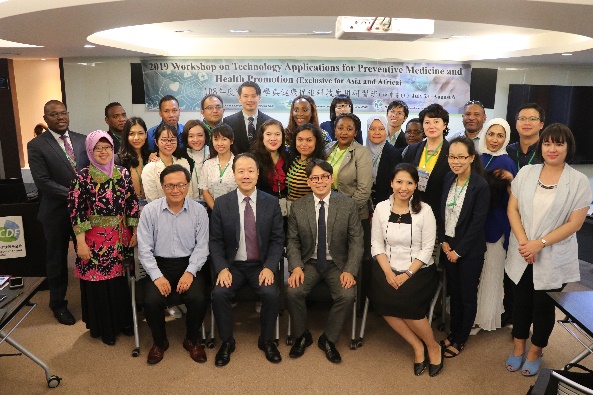
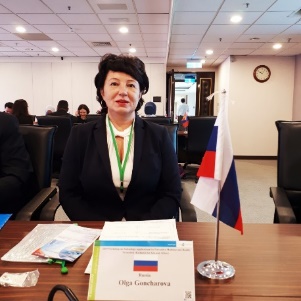
In the photo: 1. In the ICDF. 2. President of the "Russian Medical Women' Association", Doctor of Medical Sciences, Professor of the IM Sechenov First Moscow State Medical University of the Ministry of Health of Russia in Taiwan*
The importance of ICDF in exchange of international experience in the field of prevention and rehabilitation of the population.
Brief information about the ICDF:
The International Cooperation and Development Fund (Taiwan ICDF) promotes social and economic development, the expansion of human resources and the development of economic relations with partner countries. The Fund enhances international education and professional training. The Fund's projects are designed to achieve the strategic development goals of each of the partner countries, taking into account relevant regional trends. Taiwan ICDF is headquartered in Taipei, Taiwan.
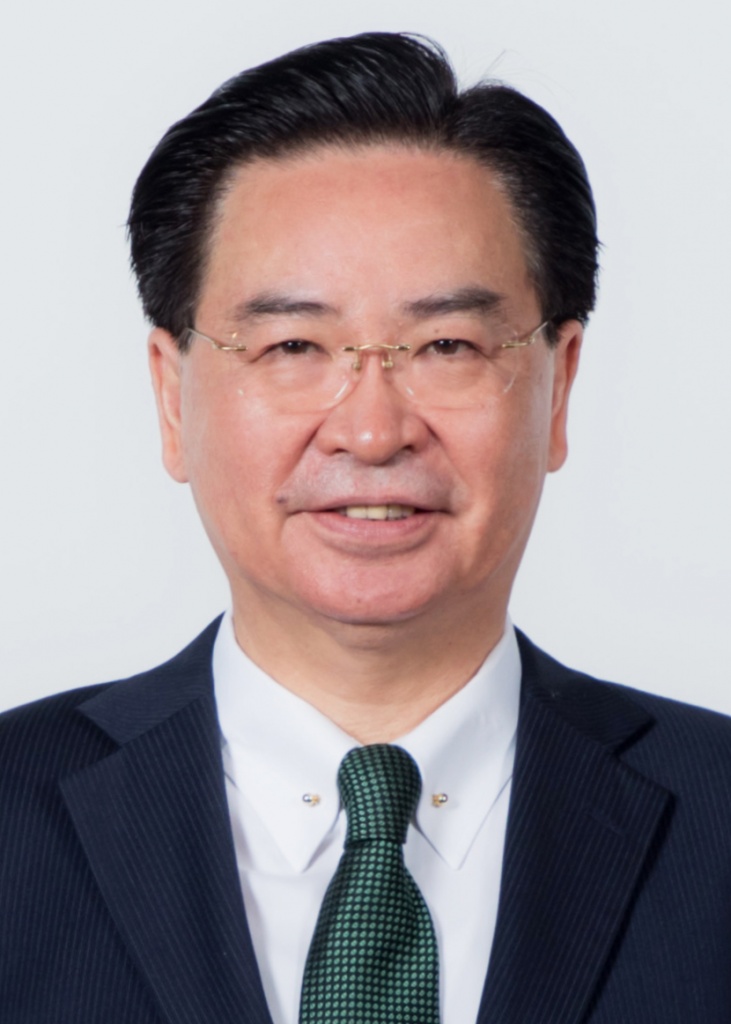
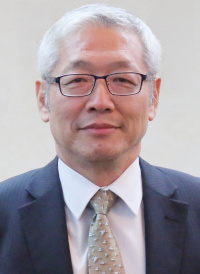



P.S. Each participating country submits materials according to an approximate plan (example of the Russian Federation):
I. History of Russian-Taiwanese cooperation in the field of health care;
II. Prevention and Rehabilitation Service in the Russian Federation.
III. Description of 1-3 new technologies for prevention and rehabilitation.
II. Prevention service in Russia (short option).
An important direction of the prevention service in the Russian Federation is the formation of a healthy lifestyle among the population.
Goncharova O.V. The basics of the prevention service in Russia.
The structure of the prevention service in Russia is represented (with the coordinating role of the Ministry of Health of Russia) by individual medical organizations:
1. Centers for medical prevention (Departments / rooms for medical prevention)
2. Medical and physical education dispensaries (Medical and physical education departments / offices);
3. Schools of future parents in antenatal clinics
4. Rooms of a healthy child in children's clinics
5. "Schools of health" on the basis of general education schools
6. "Health Centers" (new structure created in Russia 01.01. 2010).
1. Centers for medical prevention.
Republican, regional, regional, district, city Medical Prevention Centers (departments / offices) are independent specialized healthcare organizations of a special type, the structure of which is mainly represented by departments:- Department of organization and coordination of preventive work;
- Department of interdepartmental and external relations;
- Department of monitoring of risk factors of non-communicable diseases;
- Editorial and publishing Department;
- Organizational and methodological Department;
- Consulting and Wellness Department.
The specified list of subdivisions of the Center is not exhaustive. Currently, for various reasons, regional Centers for Medical Prevention as independent legal entities exist only in 34% of regions, in 22% - they are combined with medical and physical education dispensaries, in 12% they function as part of other medical organizations, in 9% - as part of medical information and analytical centers, and 3% of regions do not have Medical Prevention Centers at all (as of 2009)
Within the framework of state-public cooperation, the All-Russian public organization "Russian Medical Women' Association" takes part in solving problems and helping organizations involved in preventive work:
| Problems in the functioning of Medical Prevention Centers in the Russian Federation | State-public interaction and the role of the "Russian Medical Women' Association" |
|
1) Regional Centers for Medical Prevention as independent legal entities exist only in less than 30% of regions, they are being combined with medical and physical education dispensaries, medical information and analytical centers, and 3% of regions do not have Medical Prevention Centers. 2) The level of methodological support is low, electronic and remote forms of interaction are practically not developed. |
Scientific directions of the "Russian Medical Women' Association": "Improving the organizational and methodological activities of Medical Prevention Centers and Health Centers in Russia" and the development of a model for their interaction through the creation of an electronic cabinet that contributes to improving the quality of preventive care for adults and children and printed / electronic manuals." |
2.Medical and physical education dispensaries.
In Russia, special organizations are involved in the prevention and medical support of people involved in physical culture and sports, as well as organizational and methodological guidance of medical control, the use of physiotherapy exercises and other non-drug methods of prevention and rehabilitation of adults and children: Medical and physical dispensaries are independent medical organizations. Currently, some of them (22%) are merged with the Centers for Medical Prevention, while retaining the functions of medical support for physical culture and sports.
| Problems in the functioning of Medical and physical education dispensaries | State-public interaction and the role of the "Russian Medical Women' Association" |
|
* Functioning problems: at present, the number of admissions to competitions of athletes who do not have a medical certificate is growing and the number of athletes presenting medical admissions to sports competitions from private medical organizations that do not have a state license for this type of medical activity is increasing, which often ends tragically, especially in children's and youth sports. |
|
Family-training schools in antenatal clinics
Schools for the future parents (Schools of motherhood) in Russia work in antenatal clinics - special organizations that monitor the health of women, as well as monitor the health of pregnant women.
The work of the Schools of Motherhood is provided by obstetricians-gynecologists, pediatricians, a legal adviser (if available in the staff of the antenatal clinic), midwives and nurses for child care. Methodological support of Schools of Motherhood is carried out through communication with territorial Centers for Medical Prevention.
| Problems in the functioning of Schools for future parents | State-public interaction and the role of the "Russian Medical Women' Association" |
|
Information and methodological equipment has not been updated for many years, meanwhile, many approaches to the management of pregnancy and childbirth have largely changed, new foreign methods are being introduced into the domestic obstetric service. |
Caring for future parents and the development of information technologies to ensure the work of "Schools of motherhood" for the future parents and the introduction of available scientific and methodological aids: "Childcare Allowance", educational DVD-film "Child Development" published by the "National Book on Childcare» (Fragments) Creation in 2018 of the International electronic distance school for future parents on the new BITRIX platform baby-inform.ru (Russian version) and http://baby-inform.com/ (English version, under translation) Creation of distance learning for pregnant women being at risk group. |
4.Cabinets of a healthy child
Cabinets of a healthy child in state children's polyclinics play an important role in the prevention of diseases in children.
The main areas of their activity are: teaching parents to raise young children; educating parents on the prevention of diseases and preparing children for admission to preschool organizations, etc.
| Problems in the functioning of Cabinets of a healthy child | State-public interaction and the role of the "Russian Medical Women' Association" |
|
Information and methodological equipment has not been updated for many years, meanwhile, many approaches to monitoring children have changed in many ways.. There is no unified concept of the methodological organization of the functioning of the "Cabinets of a healthy child" |
Development of information technologies to support the work of "Schools for Young Parents" and the introduction of available scientific and methodological aids: such as "Child Care Allowance", educational DVD-film "Child Development". Creation of distance learning for the young parents. Conducting a study to assess the development of young children in Moscow and the Moscow region. |
5. Schools of Health
Special types of state general educational organizations that implement programs of preschool, primary general, basic general, secondary (complete) general education and provide a comprehensive solution to problems in education, health improvement of students with health problems and disease prevention, were general education "Health Schools". The main directions of their activity were: the formation of the health of schoolchildren and the creation of a sustainable interest and need in children in acquiring skills for a healthy lifestyle.
This experiment on the creation of "Schools of Health" has now been completed and the developed system of education and simultaneous health improvement of children is recommended for implementation in all Schools of Russia.
* Problems: at present, due to insufficient funding, not all Schools can implement the developed health improvement system.
6. Health Centers
Within the framework of the Program for the formation of a healthy lifestyle among the population of Russia, launched in 2009 by the Ministry of Health of the Russian Federation and on the basis of regulatory legal acts, in each constituent entity of Russia on a functional basis, on the basis of regional and municipal health organizations, Health Centers are being opened. begin to play a coordinating role in cooperation with all of the above organizations. As the program develops, health centers begin to open in every state medical organization - a polyclinic that operates on the territorial principle of serving people living in a given territory (1 center per 40 thousand population).
At the same time, the Ministry of Health of Russia attaches great importance to the coordination of scientific support for prevention, which is carried out by leading research institutions (in their focus) and public organizations.
Thus, the coordinating role of the Russian Ministry of Health makes it possible for scientific and public organizations to take into account the dynamics of the development of the prevention service in the country, analyze the nature of feedbacks, introduce best practices - which, in turn, allows ensuring the sustainability of the entire prevention system.
III. NEW TECHNOLOGIES OF PREVENTION AND REHABILITATION IN RUSSIA, CREATED WITHIN THE FRAMEWORK OF PUBLIC-PUBLIC INTERACTION
The All-Russian public organization "Russian Medical Women' Association" has created remote projects that are also used for Taiwan-Russian cooperation.
Each country presents its projects within the framework of this cooperation model. The Russian Federation presents its distance projects (author - Professor O. V. Goncharova, President of the "Russian Medical Women' Association"), the projects have already been presented at the anniversary Congress of the World Medical Women' Association in the USA in 2019, dedicated to the centenary of the creation of the World Medical Women' Association.
